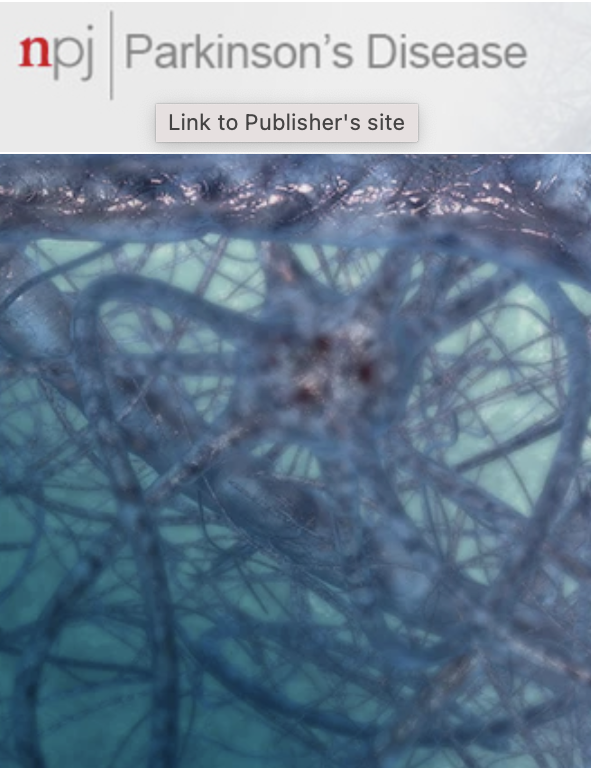α-突触核蛋白原纤维结构对帕金森病实验模型种子活性的影响。
IF 8.2
1区 医学
Q1 NEUROSCIENCES
引用次数: 0
摘要
帕金森病的核心发病机制涉及α-突触核蛋白(α-syn)的错误折叠和聚集。人们普遍认为α-syn能以朊病毒样方式传播,α-syn预制原纤维(PFFs)被广泛用于建立α-syn传播模型。然而,由于各种因素对传播效率的影响,导致实验室间和实验间的差异,实现pff的标准化协议是具有挑战性的。在这些因素中,pff的大小被认为是最具影响力的,因为非声波pff的播种和繁殖能力有限。因此,我们的研究目的是研究超声波pff的大小和构象对播种活性的影响。pff在不同条件下使用常规水浴声纳器和大功率声纳器进行超声检测,大功率声纳器通常用于下一代测序中的DNA剪切。通过电子显微镜和傅里叶变换红外(FTIR)光谱对每个超声PFF进行尺寸确认和构象分析,分析其体外/体内播种活性。强超声处理30min产生的原纤维极短,播种活性最高,这是繁殖模型的最佳条件,而超声处理60min或更长时间导致播种活性降低。FTIR光谱分析表明,超声波破坏了聚集的纤维,产生了新的纤维末端,从而导致了播种活性的增加;然而,长时间超声60分钟或更长时间释放pff中破坏β-片结构的单体,降低了播种活性。综上所述,pff中β-片结构的保持与减小之间的平衡对种子活性起着至关重要的作用。优化α-syn pff的这些参数有助于改善基于α-syn繁殖的可重复性临床前动物模型。本文章由计算机程序翻译,如有差异,请以英文原文为准。
Impact of α-synuclein fibril structure on seeding activity in experimental models of Parkinson's disease.
The central pathogenesis of Parkinson's disease involves the misfolding and aggregation of α-synuclein (α-syn). There is a widespread belief that α-syn can propagate in a prion-like manner, and α-syn preformed fibrils (PFFs) have been widely used to establish α-syn propagation models. However, achieving standardized protocols for generating PFFs is challenging due to the influence of various factors on propagation efficiency, resulting in inter-laboratory and inter-experimental variability. Among these factors, the size of the PFFs is considered the most influential as unsonicated PFFs exhibit limited seeding and propagation abilities. Therefore, the objective of our research is to examine the impact of the size and conformation of sonicated PFFs on seeding activity. PFFs were sonicated under various conditions using a conventional water bath sonicator and a high-power sonicator, which is commonly used for DNA shearing in next-generation sequencing. Each sonicated PFF was analyzed for in vitro/in vivo seeding activities, after size confirmation by electron microscopy and a conformational analysis by Fourier Transform Infrared (FTIR) spectroscopy. Strong sonication for 30 min generated extremely short fibrils with the highest seeding activity, which is the optimal condition for the propagation model, whereas sonication for 60 minutes or more led to a reduction in seeding activity. FTIR spectroscopy suggested that sonication disrupted the aggregated strands and generated new fibril ends, thereby accounting for the increased seeding activity; however, prolonged sonication for 60 min or more released monomers with disrupted β-sheet structure from PFFs and reduced the seeding activity. In conclusion, the balance between size reduction and preservation of the β-sheet structure in PFFs plays a critical role in seeding activity. Optimizing these parameters of α-syn PFFs can help improve reproducible preclinical animal models based on α-syn propagation.
求助全文
通过发布文献求助,成功后即可免费获取论文全文。
去求助
来源期刊

NPJ Parkinson's Disease
Medicine-Neurology (clinical)
CiteScore
9.80
自引率
5.70%
发文量
156
审稿时长
11 weeks
期刊介绍:
npj Parkinson's Disease is a comprehensive open access journal that covers a wide range of research areas related to Parkinson's disease. It publishes original studies in basic science, translational research, and clinical investigations. The journal is dedicated to advancing our understanding of Parkinson's disease by exploring various aspects such as anatomy, etiology, genetics, cellular and molecular physiology, neurophysiology, epidemiology, and therapeutic development. By providing free and immediate access to the scientific and Parkinson's disease community, npj Parkinson's Disease promotes collaboration and knowledge sharing among researchers and healthcare professionals.
 求助内容:
求助内容: 应助结果提醒方式:
应助结果提醒方式:


